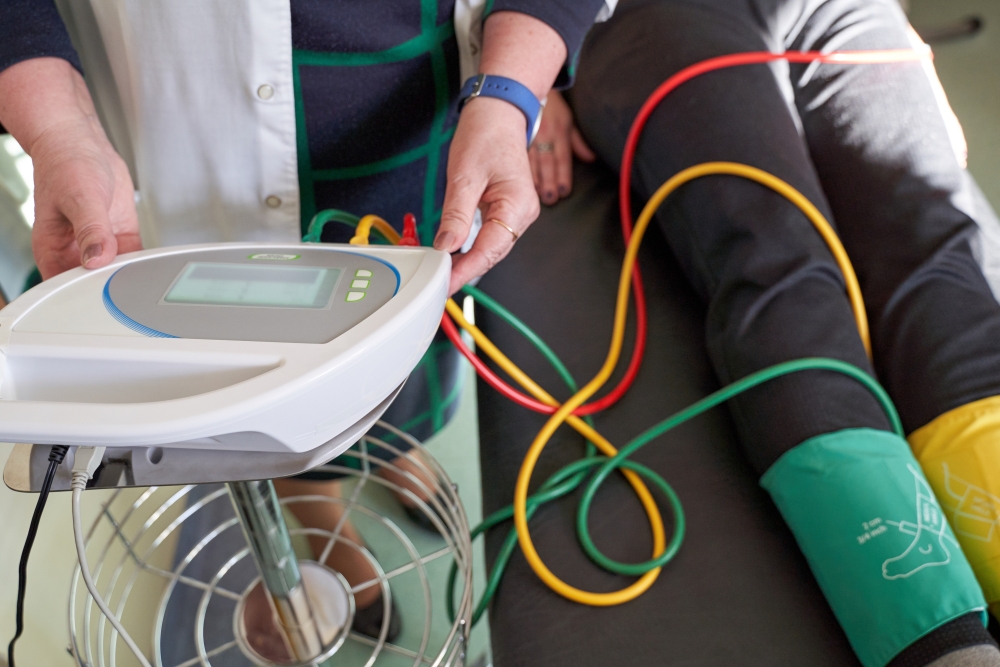Ankle-Brachial Index
(ABI)
Overview
An ankle-brachial index (ABI) is a simple ultrasound-based test that can quickly and painlessly determine if you likely have peripheral artery disease (PAD), which means blockages in the arteries leading to your legs. PAD can cause discomfort, weakness, or a feeling of heaviness in the legs while you walk and, if severe and left untreated, can potentially lead to an amputation of your leg or foot. If you have PAD, you’re also at greater risk of heart attack and stroke.
An ABI test uses a cuff to measure blood flow and blood pressure in the arteries at various locations on the thigh, calf, foot, and toes. It’s similar to having your blood pressure checked with an arm cuff.

What you can expect
To perform an ABI, which takes about 10 to 15 minutes, your doctor will do the following:
- Your doctor will use a specialized “Doppler” ultrasound device and a blood pressure cuff to measure the blood pressure in each of your ankles and in each of your arms.
- Your doctor then compares the two readings. A normal ABI reading is 1.0 (with a range of 0.9 to 1.3), which means that your legs are receiving just as much blood flow (100%) as your arms. If your blood pressure is lower in the ankle than the arm, a blockage is likely present in an artery somewhere between your heart and ankle. If this is the case, you may have PAD. Because it is a simple test with no risks involved, an ABI can be done yearly, if needed, to determine if your blockages are getting worse. ABI tests are reliable and generally consistent, even when performed in different labs from year to year.